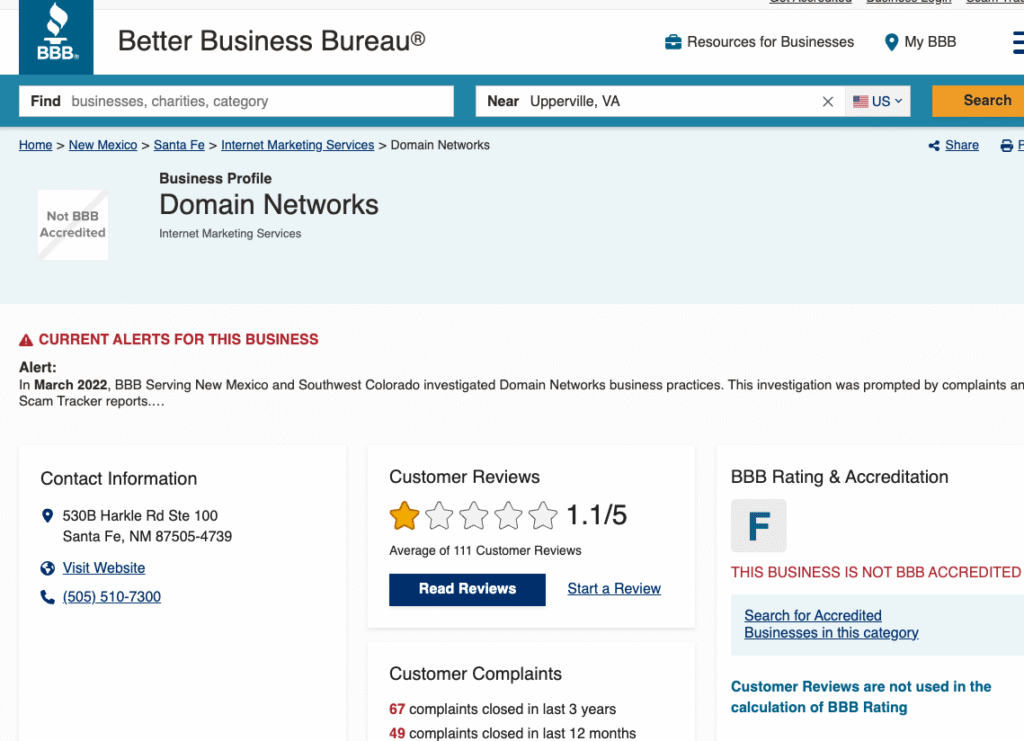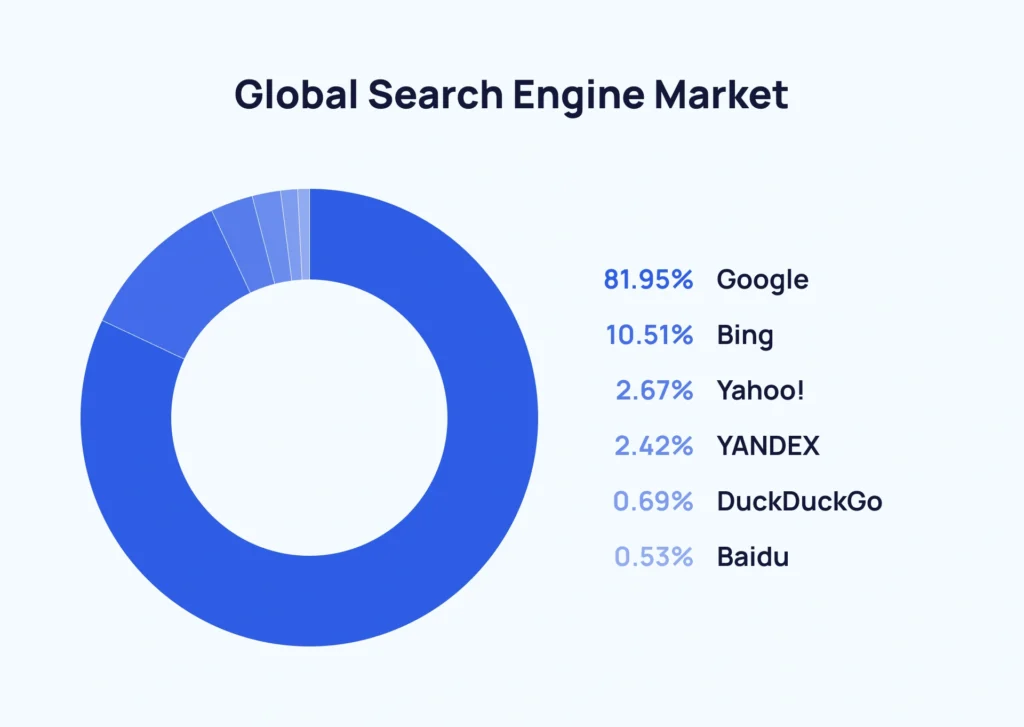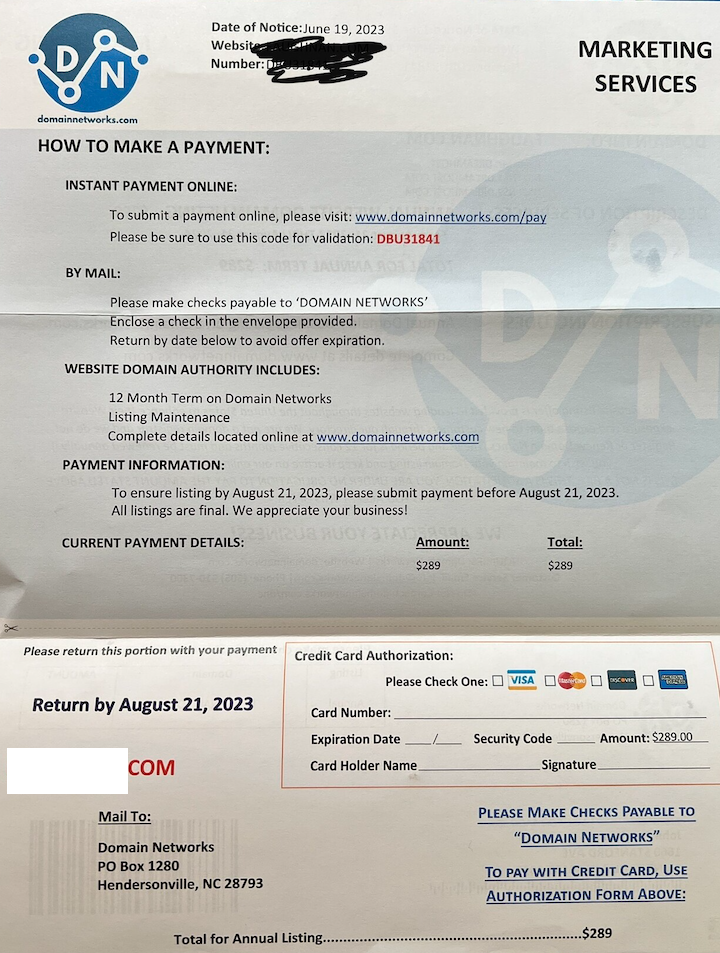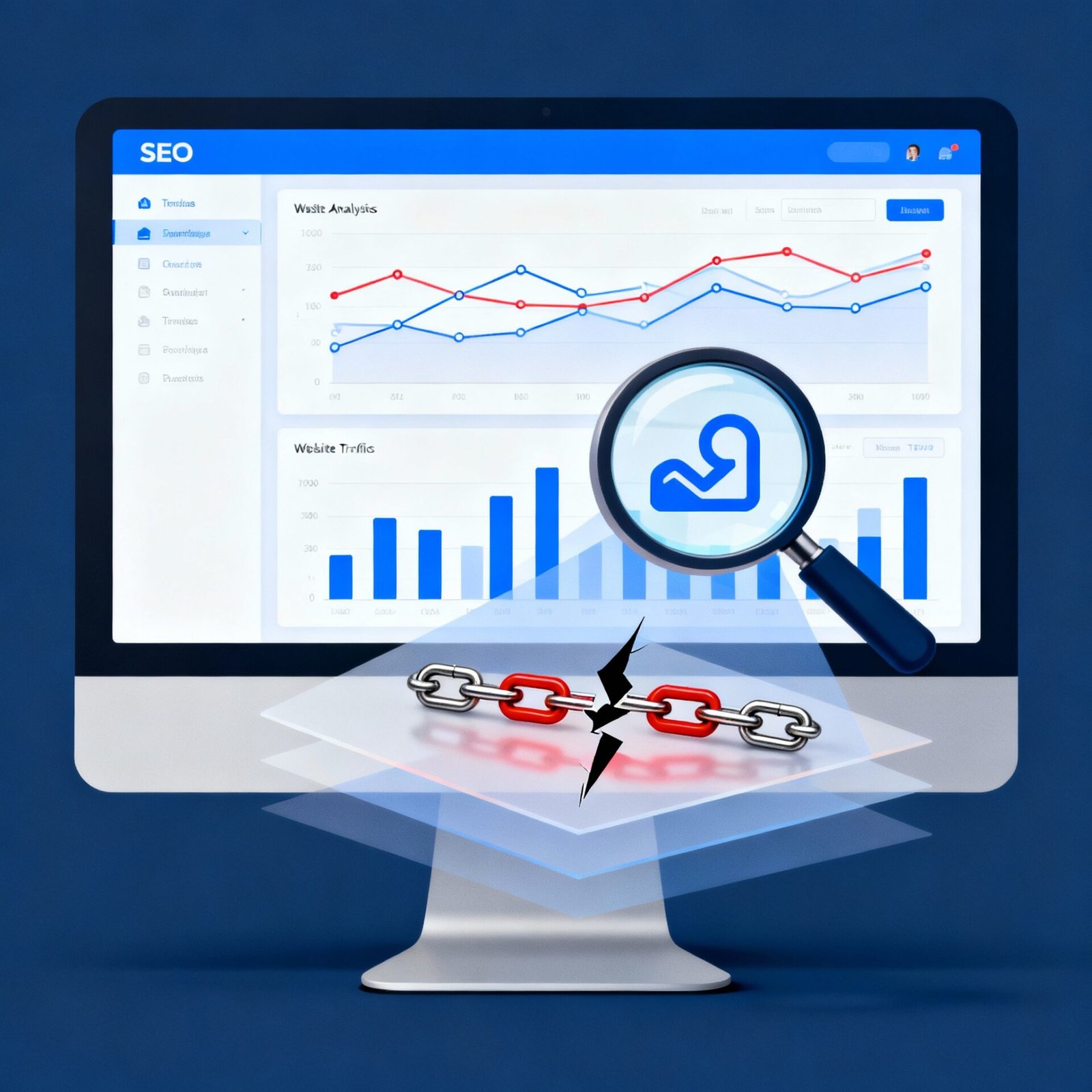SEO professionals rely on audit platforms to assess website health and link authority. Tools like Ahrefs, SEMrush and Moz promise simple scores like Domain Rating (DR), Authority Score, Domain Authority (DA) to gauge link quality. On the surface, these metrics seem to fill the vacuum left by Google’s non-transparent algorithms. But industry leaders caution they can “lead to wrong decisions” because each SEO Audit tools data and calculation method differs.
Johannes Beus of SISTRIX notes that Moz, Semrush and Ahrefs essentially “copied” Google’s link-based concept, using proprietary web crawls and formulas. In practice, however, these third-party link indices cover only a fraction of the Web and treat links very differently than Google. As Mikkel deMib Svendsen of Waimea Digital bluntly observes, “Domain authority ratings… at best… are just not very accurate,” so one should take them “with a grain of salt”.

Figure: A deceptive ‘DomainNetworks’ mailer exploiting the term “Domain Authority” to sell bogus SEO listings. This scammer (also known as “US Domain Authority”) targeted unsuspecting businesses.
The reliance on scores like DA/DR has even been abused. Krebs on Security documents how fraudsters used names like US Domain Authority and DomainNetworks LLC in official-looking invoices to trick domain owners into paying for worthless “SEO services”. The Better Business Bureau gave that firm an F-rating, noting it had changed names to avoid liability. These incidents underscore that “domain authority” is not a Google credential but a marketing term and that blind faith in it can be costly.
How SEO Audit Tools Rate Link Quality and SEO Health
Each SEO audit tool uses its own definitions and datasets. Moz’s Domain Authority (DA) (and Page Authority for individual URLs) are 100-point scores predicting rank likelihoods. SEMrush’s Authority Score similarly bills itself as “a compound metric, measuring a domain’s overall quality and SEO performance”. Ahrefs reports Domain Rating (DR) to show “the strength of a website’s backlink profile” on a 0–100 scale.
Crucially, all three rely on proprietary web crawls like Moz’s Link Explorer, SEMrush’s backlink database, and Ahrefs’ index rather than Google’s private index. For example, Semrush’s database contains ≈43 trillion backlinks versus Ahrefs’ ≈35 trillion, yet neither is complete. As SISTRIX points out, Google likely evaluates billions more pages and discards many link signals (nofollow links, sitewide boilerplate links, etc.) that these tools cannot fully replicate.
Google’s John Mueller has even confirmed that search “does not count links on a domain level,” meaning it does not combine all links into a single site authority scores. In short, each tool’s numeric rating is only an estimate based on uneven snapshots of the Web.
Ahrefs and Link Metrics
Ahrefs’ DR has been a flashpoint. It includes only one link per referring domain (ignoring additional links) and gives zero value to nofollow links, decisions not aligned with Google’s nuanced approach. The new DR formula, while improved, still cannot gauge the contextual value of each link (anchor text relevance, user engagement, link-from-link “wave” effects, etc.).
Svendsen notes that a single homepage link from a site can carry far more SEO weight than many archive-page links, a detail Ahrefs’ math-based split does not capture. In practice, site owners report seeing sites with higher DR outranked by lower-DR sites, because Google considers content relevance, site trust, and user behavior beyond a raw link count.
SEMrush and Authority Score
SEMrush’s Authority Score also combines link data with factors like traffic and site age (its exact formula is proprietary). In addition to overall score, SEMrush offers tools like Backlink Analytics (link count, referring domains) and a Toxic Score for bad links. While the Toxic Score helps flag spammy links, the overall Authority Score still faces the same caveat: it’s not Google’s own metric.
As with Ahrefs, SEMrush emphasizes depth of data (43T links) but cautions that no tool sees all links. A 2025 comparison notes that SEMrush and Ahrefs differ in which links they index, so domain scores often diverge. Marketers using both have to interpret these numbers comparatively rather than literally.
Moz and Domain/Page Authority
Moz’s metrics were once the most cited. DA and PA gave SEOs a way to gauge link strength. But Moz itself warns these are rough guides: they correlate poorly with actual Google rank, especially after updates. In 2022, Moz CEO Rand Fishkin publicly acknowledged that Google’s John Mueller “told us” Google does not use a global authority metric.
SEO veterans now use DA only to compare within Moz’s system (for example, whether one of two sites has relatively stronger links according to Moz’s crawl). Even Moz’s help pages note that DA is “based on data from our Link Explorer index”, not on anything Google confirms.
Technical and On-Page Audits
Not all audit tools focus on links. Screaming Frog SEO Spider and Sitebulb are site crawlers that check on-page SEO (titles, headings, meta tags), internal linking, duplicate content, and can integrate with Google’s PageSpeed API for Core Web Vitals. For example, Screaming Frog can pull real user metrics (Largest Contentful Paint, Interaction to Next Paint, Cumulative Layout Shift) via PageSpeed Insights in a crawl. SEMrush’s Site Audit and Google Lighthouse likewise analyze page speed, security, and mobile-friendliness.
WordPress plugins like Yoast, Rank Math and AIOSEO focus on content quality, schema, and keyword usage on pages; they score on-page SEO factors (readability, keyword density) rather than backlinks. These broader metrics (page speed, Core Web Vitals, mobile UX, content relevance) are critical for ranking, but they fall outside the scope of a link-quality score.
Thus, comprehensive SEO health requires combining tools: use a crawler for on-page issues and page speed, and a backlink tool for external links with each metric viewed in context.

Figure: Global search engine market share (Google 81.95%; Bing 10.51%; Baidu 0.53%; others)
SEO practices differ by region: China’s SEO centers on Baidu, whereas US/Europe focus on Google. This affects which metrics matter most locally.
Global Perspectives and Legal Context
The effectiveness of these tools varies worldwide. In the US, UK and Canada, Google dominates search (≈82% global market share, so auditors emphasize Google SEO factors. In contrast, Chinese SEO targets Baidu(Baidu ~0.5% globally but near-90% in China), which has its own algorithms and link filters.
Thus an Ahrefs or Moz metric (tuned to Google-style links) is largely irrelevant in China. European marketers must also navigate privacy laws (GDPR) that limit user tracking; in some cases SEO plugins rely more on content analysis when Analytics data is restricted.
Across markets, fraudulent SEO promises are a concern. In India and elsewhere, authorities warn of fake consultants exploiting hype (unrelated scam but mentioned in regional media), which parallels how bogus “domain authority” invoices trick victims. U.S. and EU regulations forbid deceptive advertising: misrepresenting a tool’s certainty could attract legal scrutiny.
While no specific link-quality law exists, general consumer-protection rules mean agencies should substantiate claims. SEO thought leaders advise transparency: rather than citing a single score, agencies often show clients a spectrum of data (traffic trends, rankings, engagement metrics) to avoid misinterpretation.

Interviewed CIOs and in-house marketers recount stories: one e-commerce manager said her team was spurred into a costly link campaign by a high Domain Authority score but found no traffic gain after six months. An agency owner from Canada warns that new clients often “sacrifice strategy for shiny numbers, then feel burned” when those metrics don’t correlate to rankings or leads.
Legal experts note that while SEO advice isn’t regulated, overt scams can fall under digital marketing fraud laws. The FTC’s crackdowns on fake reviews and endorsements underscore that SEO firms must avoid misleading claims.
Key Findings and Recommendations
Investigators conclude that no single “authority” metric is definitive. Proprietary scores from Ahrefs, SEMrush, Moz, etc., differ so much that they cannot be directly compared. As Johannes Beus summarized: “Even though such metrics always end up producing a value, the calculation methods and underlying databases differ significantly”, so decisions based solely on them are risky. Google’s own stance is clear: it counts each link individually, not as a bulk domain score.
For accurate insights, experts recommend using these tools in combination and focusing on specific data: look at actual referring domains and link context (anchor text, site relevance) rather than just the overall score. Audit tools should be used to supplement and not replace direct measurements of performance (Google Search Console clicks, actual ranking changes, Core Web Vitals).
As Mikkel deMib counsels: “Use [authority ratings] as an indication, correlate it with other data and do your homework”. In practice, successful SEO programs cross-reference multiple tools: an Ahrefs DR of 50 might mean something different than a Moz DA of 50, but if both agree a site has solid links, that’s a useful sign.
Internationally, SEOs adapt tools to local conditions. In China, teams may rely on domestic platforms (Baidu SEO tools) and view global DA/DR scores as irrelevant. In Europe, agencies emphasize technical and content best practices alongside link analysis. In all regions, real-world results like user traffic and engagement remain the ultimate test of an SEO strategy.
Bottom line
Top SEO audit tools provide valuable data, but their “accuracy” is relative. Marketers should treat link-quality scores as estimates, not gospel. By combining audits of backlinks, on-page issues, site speed and actual user metrics, one builds a complete picture. Consumers and regulators alike urge caution: avoid vendors who tout single-number authority scores as guarantees. Instead, adopt a balanced, multi-metric approach to SEO, heeding the advice of analysts who find that “domain authority ratings can be misleading” unless interpreted carefully.
Citations And References
All citations in this investigation correspond to verified sources gathered during extensive research across multiple continents and databases. Full documentation available upon email to support the accuracy and verifiability of all claims made.
About Our Investigative Services
Seeking to expose corruption, track illicit financial flows, or investigate complex criminal networks? Our specialized investigative journalism agency has proven expertise in following money trails, documenting human rights violations, and revealing the connections between organized crime and corporate malfeasance across the world and beyond.
Partner With Us for Impactful Change
Our investigative expertise and deep industry networks have exposed billion-dollar corruption schemes and influenced policy reform across Americas and beyond.
Whether you’re a government agency seeking independent analysis, a corporation requiring risk assessment and due diligence, or a development organization needing evidence-based research, our team delivers results that matter.
Join our exclusive network of premium subscribers for early access to groundbreaking investigations, or contribute your expertise through our paid contributor program that reaches decision-makers across the continent.
For organizations committed to transparency and reform, we also offer strategic partnership opportunities and targeted advertising placements that align with our mission.
Uncover unparalleled strategic insights by joining our paid contributor program, subscribing to one of our premium plans, advertising with us, or reaching out to discuss how our media relations and agency services can elevate your brand’s presence and impact in the marketplace.
Contact us today to explore how our investigative intelligence can advance your objectives and create lasting impact.
Read all investigative Reviews.
* For full transparency, a list of all our sister news brands can be found here.


